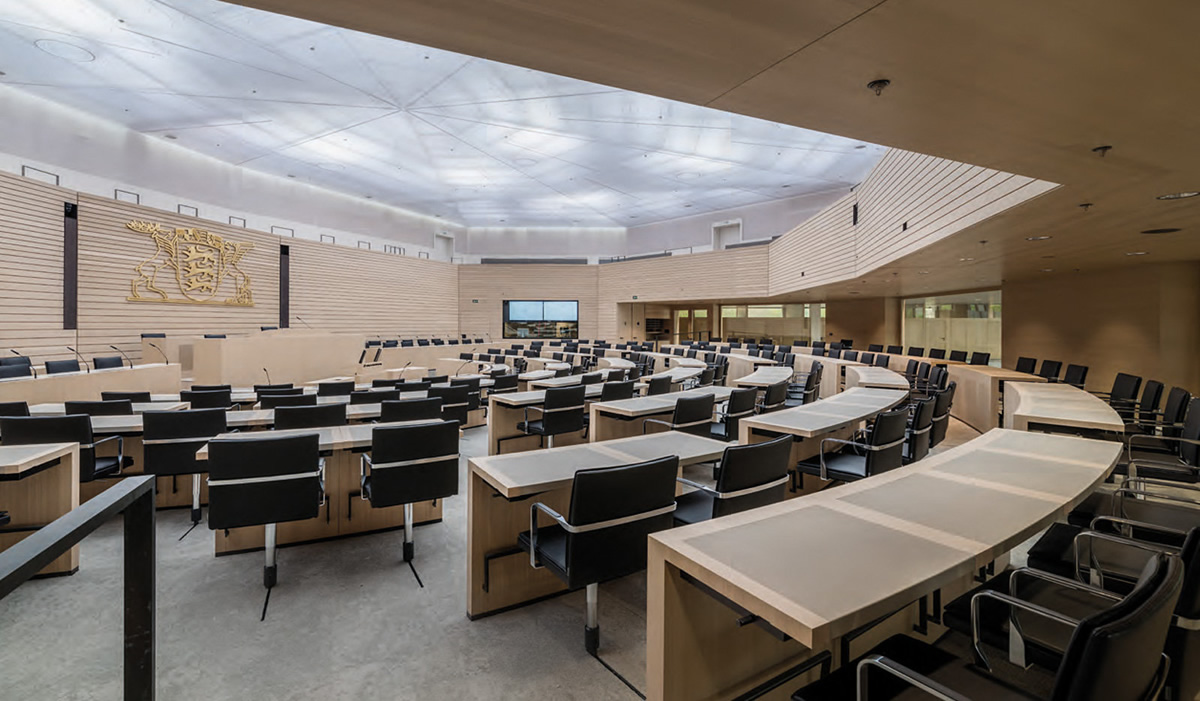State Parliament
by Walter Knoll
Walter Knoll furnishes the plenary hall of Stuttgart's State Parliament, recently renovated by Staab Architekten Berlin. As was the case at the time with the famous Weissenhof Estate, it is a structural manifesto of modernity, shaped by Walter Knoll.
The State Parliament in Stuttgart is one of the icons of post-war modernity. Following the Weissenhof Estate, created in 1927 under the direction of Ludwig Mies van der Rohe, the parliament building is seen as Stuttgart's second homage to modernity. Staab Architekten from Berlin renovated this listed building – sensitively preserving the existing features and demonstrating its interpretation of high design quality.
Clear, cubic, resolute: the Landtag as it is known in Stuttgart, capital of the southern German state of Baden-Württemberg, was built between 1958 and 1961, and was the first parliament building to be built in Europe after 1945. It reflects architect Kurt Viertel's uncompromisingly modern design language – and is thus entirely in line with the architectural principles of Mies van der Rohe. The cube-shaped concrete frame construction with a glass façade and bronze outlines rises up from the square floor plan – a genuine symbol of openness and transparency.
Transparency and openness on the inside too: Staab Architekten opened up the previously closed polygonal core of the plenary hall. Daylight shines into the hall through the translucent ceiling featuring twelve light cones and narrow light tubes.
Discussions take place and decisions are made by politicians sitting on chairs specially created by Walter Knoll for the plenary hall. The lobby features elegant sofas and armchairs from the Foster range. With the State Parliament building in Stuttgart, Walter Knoll is continuing its story of furnishing icons of modernity - as it did in 1927 when the company shaped nine show flats on the legendary Stuttgart Weissenhof Estate.
The reopening of the renovated and modernised State Parliament building of Baden-Württemberg was celebrated on 11 May 2016 – on the occasion of the constitutive session of the new state government.



.jpg)
